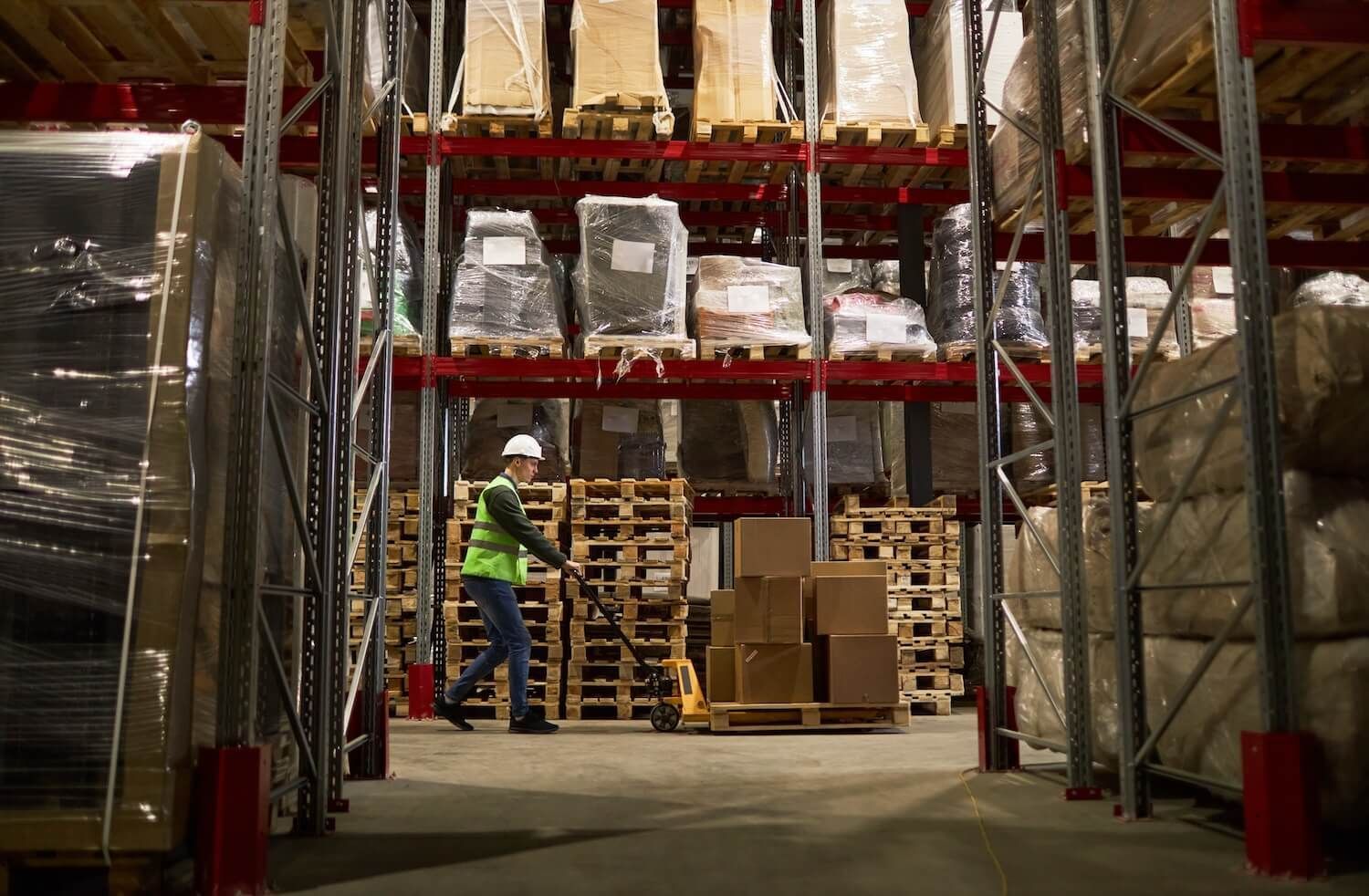On-Demand Warehousing: Your Secret Weapon for Quick Market Adaptation

Imagine this: You’re at the helm of a promising e-commerce business, finally gaining significant traction in a niche market. For the past few years, your growth has been a steady climb, each quarter building upon the last. You’ve meticulously forecasted your inventory needs, signed what seemed like prudent long-term leases on strategically located warehouse spaces, and painstakingly forged relationships with reliable distribution partners. Your supply chain, once a source of quiet confidence, now feels increasingly brittle.
Then, the unforeseen strikes. A sudden escalation in geopolitical tensions triggers a cascade of trade restrictions, impacting the cost and availability of your key raw materials. Simultaneously, a major shipping canal faces an unexpected closure, throwing global logistics into disarray and causing delivery times to balloon. Your carefully calibrated inventory levels suddenly become a liability – warehouses overflowing with products that are either too expensive to sell competitively or stuck in transit limbo. You watch with growing unease as your more agile competitors, unburdened by rigid infrastructure, swiftly identify alternative suppliers, adjust their product offerings, and communicate transparently with their anxious customer base. You feel like a seasoned sailor caught in a rogue wave, your once-sturdy vessel tossed about with alarming force, the familiar landmarks of the market nowhere in sight.
This isn't a dramatic hypothetical designed to induce anxiety; it's the lived experience of countless business leaders navigating the increasingly unpredictable currents of the 21st-century global economy. The era of stable, predictable markets, where long-term planning offered a clear path to success, has been decisively replaced by an age of relentless volatility, fueled by geopolitical instability, trade disputes, climate change impacts, and the ever-present specter of unforeseen global events. The very operational foundations that once promised security – long-term contracts, fixed asset ownership, and intricately planned but inflexible supply chains – can rapidly transform into significant impediments, hindering a business's ability to adapt, innovate, and ultimately, survive.
The fundamental challenge for many businesses isn't a deficit of strategic vision or a misunderstanding of their target market. Instead, it lies in the inherent rigidity of traditional logistics infrastructure, with warehousing often representing a significant bottleneck. Entangled in lengthy lease agreements, constrained by predetermined storage capacities, and geographically tethered to locations that may no longer be optimal, businesses find themselves struggling to execute the rapid adjustments necessary to capitalize on fleeting market opportunities or effectively mitigate emerging threats. The very infrastructure designed to facilitate growth inadvertently becomes an anchor, preventing the swift, decisive actions required for true market responsiveness.
The Promise of a Dynamic Logistics Future
But what if there existed an alternative approach? What if your warehousing strategy could mirror the dynamism of the market itself, flexing and adapting in real-time to evolving conditions?
Enter the transformative concept of on-demand warehousing: a fundamental reimagining of how businesses approach their storage and distribution needs. Think of it as the logistical parallel to the scalability and agility offered by cloud-based technology. Instead of the capital-intensive and long-term commitment of owning and operating dedicated warehouse facilities, or even being locked into rigid long-term leases, your business gains access to a vast network of available storage space, precisely when and where it's needed. This isn't a temporary fix or a last-resort solution; it represents a strategic shift towards building a fundamentally more agile, resilient, and responsive supply chain.
On-Demand Warehousing Navigating Market Turbulence with Agility
Revisit the initial scenario. The sudden imposition of tariffs renders a significant portion of your imported inventory less competitive. With a traditional warehousing model, you're likely stuck with underutilized space in a location that now holds less strategic value. However, with on-demand warehousing, you possess the agility to rapidly downsize your storage footprint in that particular region while simultaneously securing temporary storage closer to newly identified domestic suppliers or emerging, more promising markets. The unexpected closure of a critical shipping canal disrupts your established transportation routes? You can swiftly establish short-term warehousing solutions near alternative ports or inland transportation hubs, ensuring your goods can bypass the bottleneck and reach your customers with minimal disruption and delay.

The true power of on-demand warehousing lies in its inherent flexibility, a characteristic that directly addresses the core challenges posed by persistent market volatility. It effectively dismantles the traditional limitations of fixed capacity and protracted contractual obligations, unlocking a range of critical benefits:
Unprecedented Scalability: Adapting to Demand Fluctuations
The modern marketplace is characterized by its unpredictable ebbs and flows. Demand can surge unexpectedly due to viral marketing campaigns, seasonal peaks, or sudden shifts in consumer preferences. Conversely, unforeseen economic downturns or changing trends can lead to rapid declines in demand. Traditional warehousing models struggle to accommodate these dramatic fluctuations efficiently. Expanding or contracting leased space often involves lengthy negotiations, significant costs, and considerable time delays.
On-demand warehousing offers a stark contrast. It empowers businesses to instantly access the required storage capacity during periods of high demand, without the cumbersome processes and substantial capital expenditure associated with traditional warehouse expansion. Conversely, when demand cools or market conditions necessitate a smaller footprint, businesses can effortlessly reduce their storage commitments, avoiding the costly burden of underutilized space and wasted resources. This dynamic scalability acts as a powerful shock absorber, allowing businesses to adapt their logistical infrastructure in lockstep with the ever-changing demands of the market.
Geographical Agility: Reaching New Markets and Mitigating Risks
In an increasingly interconnected world, market opportunities and potential disruptions can emerge from virtually any corner of the globe. Traditional warehousing strategies, often anchored to specific long-term locations, can severely limit a business's ability to capitalize on new geographical markets or respond effectively to regional supply chain disruptions. Establishing a physical warehousing presence in a new market typically involves extensive research, significant upfront investment, and considerable time. Similarly, navigating localized disruptions, such as port congestion or regional conflicts, can be incredibly challenging when your storage and distribution network lacks geographical flexibility.
On-demand warehousing provides the critical agility to establish a logistical foothold in new locations with remarkable speed and minimal upfront investment. Whether your business is exploring a promising new international market, responding to a sudden surge in demand in a specific region, or seeking alternative storage solutions to circumvent localized supply chain bottlenecks, on-demand warehousing offers access to strategically located storage facilities on a flexible, as-needed basis. This geographical agility transforms a potential logistical hurdle into a strategic advantage, enabling businesses to expand their reach and mitigate risks with unprecedented efficiency.
Variable Cost Structure: Enhancing Financial Resilience
In an era marked by economic uncertainty and fluctuating market conditions, the burden of fixed costs can significantly impact a business's financial stability and profitability. Traditional long-term warehouse leases represent a substantial fixed expense, regardless of actual utilization rates. This lack of cost flexibility can strain cash flow during periods of lower demand or unexpected market downturns, limiting a business's ability to invest in other critical areas or weather economic storms.
On-demand warehousing fundamentally alters this cost structure, transforming storage expenses into a variable cost directly proportional to actual usage. This pay-as-you-go model offers significant advantages for cash flow management, allowing businesses to align their warehousing costs with their revenue streams. By eliminating the financial risks associated with long-term commitments and underutilized space, on-demand warehousing provides a crucial layer of financial resilience, enabling businesses to navigate market fluctuations with greater confidence and agility.
Access to Integrated Logistics Services: Streamlining Operations
Beyond simply providing flexible storage space, many on-demand warehousing providers offer a comprehensive suite of integrated logistics services, including inventory management, order fulfillment, last-mile delivery coordination, and specialized handling capabilities. This access to a dynamic network of logistics expertise and infrastructure allows businesses to adapt their entire distribution strategy with remarkable speed and efficiency. Whether you need to rapidly scale up your fulfillment operations to meet a sudden surge in online orders or implement specialized handling procedures for a new product line, on-demand warehousing can provide access to the necessary capabilities without the need for significant in-house investment or the complexities of managing multiple disparate logistics providers. This streamlined approach enhances operational efficiency and responsiveness, allowing businesses to adapt to evolving customer expectations and market demands with greater ease.
Real-World Resilience: Thriving in Uncertainty
Consider the businesses that demonstrated remarkable resilience and adaptability during the unprecedented disruptions of the COVID-19 pandemic. Many of these companies were characterized by their ability to rapidly adjust their supply chains, pivot to online sales channels, and efficiently distribute goods despite widespread lockdowns and logistical challenges. On-demand warehousing could have served as a critical enabler for countless more businesses during this period, providing the essential logistical agility to navigate unprecedented levels of market volatility and operational disruption.
The true value proposition of on-demand warehousing extends far beyond mere cost savings or the convenience of readily available space. It's about cultivating inherent business agility. It's about empowering your organization with the responsiveness and flexibility required to not only weather the inevitable storms of market volatility but to proactively identify and capitalize on the new opportunities that invariably emerge from periods of change. In a global landscape where uncertainty has become the new normal, the ability to adapt quickly and decisively is no longer a competitive advantage – it's a fundamental prerequisite for sustained growth and long-term survival.
Embracing the Agile Future of Logistics with On-Demand Warehousing
Learn how on-demand warehousing provides the critical agility your business needs to not just survive, but thrive in an era of constant market change. Explore the transformative potential of a flexible and responsive logistics strategy and unlock your company's inherent capacity to adapt, innovate, and excel in any market condition. Don't allow the limitations of fixed infrastructure to constrain your growth and hinder your ability to respond to the unexpected. Embrace the power of on-demand warehousing and transform market volatility from a threat into your ultimate competitive advantage.
Ready to unlock unparalleled agility and future-proof your supply chain? Discover how Razr Logistics' on-demand warehousing solutions can empower your business to adapt instantly – explore our flexible options today.












 by
by